Portable Pulse Oximeters
Stationary Pulse Oximeters
Fingertip Pulse Oximeters
Wrist Pulse Oximeters
Conventional Pulse Oximeters
Smart Pulse Oximeters
Wearable Pulse Oximeters
Hospitals
Homecare
Emergency Services
Ambulatory Surgical Centers
North America
Europe
South America
Asia Pacific
Middle East and Africa
North America Outlook (USD Billion, 2019-2035)
North America Pulse Oximeters Market by Type
Portable Pulse Oximeters
Stationary Pulse Oximeters
Fingertip Pulse Oximeters
Wrist Pulse Oximeters
North America Pulse Oximeters Market by Technology Type
Conventional Pulse Oximeters
Smart Pulse Oximeters
Wearable Pulse Oximeters
North America Pulse Oximeters Market by End Use Type
Hospitals
Homecare
Emergency Services
Ambulatory Surgical Centers
North America Pulse Oximeters Market by Regional Type
US
Canada
US Outlook (USD Billion, 2019-2035)
US Pulse Oximeters Market by Type
Portable Pulse Oximeters
Stationary Pulse Oximeters
Fingertip Pulse Oximeters
Wrist Pulse Oximeters
US Pulse Oximeters Market by Technology Type
Conventional Pulse Oximeters
Smart Pulse Oximeters
Wearable Pulse Oximeters
US Pulse Oximeters Market by End Use Type
Hospitals
Homecare
Emergency Services
Ambulatory Surgical Centers
CANADA Outlook (USD Billion, 2019-2035)
CANADA Pulse Oximeters Market by Type
Portable Pulse Oximeters
Stationary Pulse Oximeters
Fingertip Pulse Oximeters
Wrist Pulse Oximeters
CANADA Pulse Oximeters Market by Technology Type
Conventional Pulse Oximeters
Smart Pulse Oximeters
Wearable Pulse Oximeters
CANADA Pulse Oximeters Market by End Use Type
Hospitals
Homecare
Emergency Services
Ambulatory Surgical Centers
Europe Outlook (USD Billion, 2019-2035)
Europe Pulse Oximeters Market by Type
Portable Pulse Oximeters
Stationary Pulse Oximeters
Fingertip Pulse Oximeters
Wrist Pulse Oximeters
Europe Pulse Oximeters Market by Technology Type
Conventional Pulse Oximeters
Smart Pulse Oximeters
Wearable Pulse Oximeters
Europe Pulse Oximeters Market by End Use Type
Hospitals
Homecare
Emergency Services
Ambulatory Surgical Centers
Europe Pulse Oximeters Market by Regional Type
Germany
UK
France
Russia
Italy
Spain
Rest of Europe
GERMANY Outlook (USD Billion, 2019-2035)
GERMANY Pulse Oximeters Market by Type
Portable Pulse Oximeters
Stationary Pulse Oximeters
Fingertip Pulse Oximeters
Wrist Pulse Oximeters
GERMANY Pulse Oximeters Market by Technology Type
Conventional Pulse Oximeters
Smart Pulse Oximeters
Wearable Pulse Oximeters
GERMANY Pulse Oximeters Market by End Use Type
Hospitals
Homecare
Emergency Services
Ambulatory Surgical Centers
UK Outlook (USD Billion, 2019-2035)
UK Pulse Oximeters Market by Type
Portable Pulse Oximeters
Stationary Pulse Oximeters
Fingertip Pulse Oximeters
Wrist Pulse Oximeters
UK Pulse Oximeters Market by Technology Type
Conventional Pulse Oximeters
Smart Pulse Oximeters
Wearable Pulse Oximeters
UK Pulse Oximeters Market by End Use Type
Hospitals
Homecare
Emergency Services
Ambulatory Surgical Centers
FRANCE Outlook (USD Billion, 2019-2035)
FRANCE Pulse Oximeters Market by Type
Portable Pulse Oximeters
Stationary Pulse Oximeters
Fingertip Pulse Oximeters
Wrist Pulse Oximeters
FRANCE Pulse Oximeters Market by Technology Type
Conventional Pulse Oximeters
Smart Pulse Oximeters
Wearable Pulse Oximeters
FRANCE Pulse Oximeters Market by End Use Type
Hospitals
Homecare
Emergency Services
Ambulatory Surgical Centers
RUSSIA Outlook (USD Billion, 2019-2035)
RUSSIA Pulse Oximeters Market by Type
Portable Pulse Oximeters
Stationary Pulse Oximeters
Fingertip Pulse Oximeters
Wrist Pulse Oximeters
RUSSIA Pulse Oximeters Market by Technology Type
Conventional Pulse Oximeters
Smart Pulse Oximeters
Wearable Pulse Oximeters
RUSSIA Pulse Oximeters Market by End Use Type
Hospitals
Homecare
Emergency Services
Ambulatory Surgical Centers
ITALY Outlook (USD Billion, 2019-2035)
ITALY Pulse Oximeters Market by Type
Portable Pulse Oximeters
Stationary Pulse Oximeters
Fingertip Pulse Oximeters
Wrist Pulse Oximeters
ITALY Pulse Oximeters Market by Technology Type
Conventional Pulse Oximeters
Smart Pulse Oximeters
Wearable Pulse Oximeters
ITALY Pulse Oximeters Market by End Use Type
Hospitals
Homecare
Emergency Services
Ambulatory Surgical Centers
SPAIN Outlook (USD Billion, 2019-2035)
SPAIN Pulse Oximeters Market by Type
Portable Pulse Oximeters
Stationary Pulse Oximeters
Fingertip Pulse Oximeters
Wrist Pulse Oximeters
SPAIN Pulse Oximeters Market by Technology Type
Conventional Pulse Oximeters
Smart Pulse Oximeters
Wearable Pulse Oximeters
SPAIN Pulse Oximeters Market by End Use Type
Hospitals
Homecare
Emergency Services
Ambulatory Surgical Centers
REST OF EUROPE Outlook (USD Billion, 2019-2035)
REST OF EUROPE Pulse Oximeters Market by Type
Portable Pulse Oximeters
Stationary Pulse Oximeters
Fingertip Pulse Oximeters
Wrist Pulse Oximeters
REST OF EUROPE Pulse Oximeters Market by Technology Type
Conventional Pulse Oximeters
Smart Pulse Oximeters
Wearable Pulse Oximeters
REST OF EUROPE Pulse Oximeters Market by End Use Type
Hospitals
Homecare
Emergency Services
Ambulatory Surgical Centers
APAC Outlook (USD Billion, 2019-2035)
APAC Pulse Oximeters Market by Type
Portable Pulse Oximeters
Stationary Pulse Oximeters
Fingertip Pulse Oximeters
Wrist Pulse Oximeters
APAC Pulse Oximeters Market by Technology Type
Conventional Pulse Oximeters
Smart Pulse Oximeters
Wearable Pulse Oximeters
APAC Pulse Oximeters Market by End Use Type
Hospitals
Homecare
Emergency Services
Ambulatory Surgical Centers
APAC Pulse Oximeters Market by Regional Type
China
India
Japan
South Korea
Malaysia
Thailand
Indonesia
Rest of APAC
CHINA Outlook (USD Billion, 2019-2035)
CHINA Pulse Oximeters Market by Type
Portable Pulse Oximeters
Stationary Pulse Oximeters
Fingertip Pulse Oximeters
Wrist Pulse Oximeters
CHINA Pulse Oximeters Market by Technology Type
Conventional Pulse Oximeters
Smart Pulse Oximeters
Wearable Pulse Oximeters
CHINA Pulse Oximeters Market by End Use Type
Hospitals
Homecare
Emergency Services
Ambulatory Surgical Centers
INDIA Outlook (USD Billion, 2019-2035)
INDIA Pulse Oximeters Market by Type
Portable Pulse Oximeters
Stationary Pulse Oximeters
Fingertip Pulse Oximeters
Wrist Pulse Oximeters
INDIA Pulse Oximeters Market by Technology Type
Conventional Pulse Oximeters
Smart Pulse Oximeters
Wearable Pulse Oximeters
INDIA Pulse Oximeters Market by End Use Type
Hospitals
Homecare
Emergency Services
Ambulatory Surgical Centers
JAPAN Outlook (USD Billion, 2019-2035)
JAPAN Pulse Oximeters Market by Type
Portable Pulse Oximeters
Stationary Pulse Oximeters
Fingertip Pulse Oximeters
Wrist Pulse Oximeters
JAPAN Pulse Oximeters Market by Technology Type
Conventional Pulse Oximeters
Smart Pulse Oximeters
Wearable Pulse Oximeters
JAPAN Pulse Oximeters Market by End Use Type
Hospitals
Homecare
Emergency Services
Ambulatory Surgical Centers
SOUTH KOREA Outlook (USD Billion, 2019-2035)
SOUTH KOREA Pulse Oximeters Market by Type
Portable Pulse Oximeters
Stationary Pulse Oximeters
Fingertip Pulse Oximeters
Wrist Pulse Oximeters
SOUTH KOREA Pulse Oximeters Market by Technology Type
Conventional Pulse Oximeters
Smart Pulse Oximeters
Wearable Pulse Oximeters
SOUTH KOREA Pulse Oximeters Market by End Use Type
Hospitals
Homecare
Emergency Services
Ambulatory Surgical Centers
MALAYSIA Outlook (USD Billion, 2019-2035)
MALAYSIA Pulse Oximeters Market by Type
Portable Pulse Oximeters
Stationary Pulse Oximeters
Fingertip Pulse Oximeters
Wrist Pulse Oximeters
MALAYSIA Pulse Oximeters Market by Technology Type
Conventional Pulse Oximeters
Smart Pulse Oximeters
Wearable Pulse Oximeters
MALAYSIA Pulse Oximeters Market by End Use Type
Hospitals
Homecare
Emergency Services
Ambulatory Surgical Centers
THAILAND Outlook (USD Billion, 2019-2035)
THAILAND Pulse Oximeters Market by Type
Portable Pulse Oximeters
Stationary Pulse Oximeters
Fingertip Pulse Oximeters
Wrist Pulse Oximeters
THAILAND Pulse Oximeters Market by Technology Type
Conventional Pulse Oximeters
Smart Pulse Oximeters
Wearable Pulse Oximeters
THAILAND Pulse Oximeters Market by End Use Type
Hospitals
Homecare
Emergency Services
Ambulatory Surgical Centers
INDONESIA Outlook (USD Billion, 2019-2035)
INDONESIA Pulse Oximeters Market by Type
Portable Pulse Oximeters
Stationary Pulse Oximeters
Fingertip Pulse Oximeters
Wrist Pulse Oximeters
INDONESIA Pulse Oximeters Market by Technology Type
Conventional Pulse Oximeters
Smart Pulse Oximeters
Wearable Pulse Oximeters
INDONESIA Pulse Oximeters Market by End Use Type
Hospitals
Homecare
Emergency Services
Ambulatory Surgical Centers
REST OF APAC Outlook (USD Billion, 2019-2035)
REST OF APAC Pulse Oximeters Market by Type
Portable Pulse Oximeters
Stationary Pulse Oximeters
Fingertip Pulse Oximeters
Wrist Pulse Oximeters
REST OF APAC Pulse Oximeters Market by Technology Type
Conventional Pulse Oximeters
Smart Pulse Oximeters
Wearable Pulse Oximeters
REST OF APAC Pulse Oximeters Market by End Use Type
Hospitals
Homecare
Emergency Services
Ambulatory Surgical Centers
South America Outlook (USD Billion, 2019-2035)
South America Pulse Oximeters Market by Type
Portable Pulse Oximeters
Stationary Pulse Oximeters
Fingertip Pulse Oximeters
Wrist Pulse Oximeters
South America Pulse Oximeters Market by Technology Type
Conventional Pulse Oximeters
Smart Pulse Oximeters
Wearable Pulse Oximeters
South America Pulse Oximeters Market by End Use Type
Hospitals
Homecare
Emergency Services
Ambulatory Surgical Centers
South America Pulse Oximeters Market by Regional Type
Brazil
Mexico
Argentina
Rest of South America
BRAZIL Outlook (USD Billion, 2019-2035)
BRAZIL Pulse Oximeters Market by Type
Portable Pulse Oximeters
Stationary Pulse Oximeters
Fingertip Pulse Oximeters
Wrist Pulse Oximeters
BRAZIL Pulse Oximeters Market by Technology Type
Conventional Pulse Oximeters
Smart Pulse Oximeters
Wearable Pulse Oximeters
BRAZIL Pulse Oximeters Market by End Use Type
Hospitals
Homecare
Emergency Services
Ambulatory Surgical Centers
MEXICO Outlook (USD Billion, 2019-2035)
MEXICO Pulse Oximeters Market by Type
Portable Pulse Oximeters
Stationary Pulse Oximeters
Fingertip Pulse Oximeters
Wrist Pulse Oximeters
MEXICO Pulse Oximeters Market by Technology Type
Conventional Pulse Oximeters
Smart Pulse Oximeters
Wearable Pulse Oximeters
MEXICO Pulse Oximeters Market by End Use Type
Hospitals
Homecare
Emergency Services
Ambulatory Surgical Centers
ARGENTINA Outlook (USD Billion, 2019-2035)
ARGENTINA Pulse Oximeters Market by Type
Portable Pulse Oximeters
Stationary Pulse Oximeters
Fingertip Pulse Oximeters
Wrist Pulse Oximeters
ARGENTINA Pulse Oximeters Market by Technology Type
Conventional Pulse Oximeters
Smart Pulse Oximeters
Wearable Pulse Oximeters
ARGENTINA Pulse Oximeters Market by End Use Type
Hospitals
Homecare
Emergency Services
Ambulatory Surgical Centers
REST OF SOUTH AMERICA Outlook (USD Billion, 2019-2035)
REST OF SOUTH AMERICA Pulse Oximeters Market by Type
Portable Pulse Oximeters
Stationary Pulse Oximeters
Fingertip Pulse Oximeters
Wrist Pulse Oximeters
REST OF SOUTH AMERICA Pulse Oximeters Market by Technology Type
Conventional Pulse Oximeters
Smart Pulse Oximeters
Wearable Pulse Oximeters
REST OF SOUTH AMERICA Pulse Oximeters Market by End Use Type
Hospitals
Homecare
Emergency Services
Ambulatory Surgical Centers
MEA Outlook (USD Billion, 2019-2035)
MEA Pulse Oximeters Market by Type
Portable Pulse Oximeters
Stationary Pulse Oximeters
Fingertip Pulse Oximeters
Wrist Pulse Oximeters
MEA Pulse Oximeters Market by Technology Type
Conventional Pulse Oximeters
Smart Pulse Oximeters
Wearable Pulse Oximeters
MEA Pulse Oximeters Market by End Use Type
Hospitals
Homecare
Emergency Services
Ambulatory Surgical Centers
MEA Pulse Oximeters Market by Regional Type
GCC Countries
South Africa
Rest of MEA
GCC COUNTRIES Outlook (USD Billion, 2019-2035)
GCC COUNTRIES Pulse Oximeters Market by Type
Portable Pulse Oximeters
Stationary Pulse Oximeters
Fingertip Pulse Oximeters
Wrist Pulse Oximeters
GCC COUNTRIES Pulse Oximeters Market by Technology Type
Conventional Pulse Oximeters
Smart Pulse Oximeters
Wearable Pulse Oximeters
GCC COUNTRIES Pulse Oximeters Market by End Use Type
Hospitals
Homecare
Emergency Services
Ambulatory Surgical Centers
SOUTH AFRICA Outlook (USD Billion, 2019-2035)
SOUTH AFRICA Pulse Oximeters Market by Type
Portable Pulse Oximeters
Stationary Pulse Oximeters
Fingertip Pulse Oximeters
Wrist Pulse Oximeters
SOUTH AFRICA Pulse Oximeters Market by Technology Type
Conventional Pulse Oximeters
Smart Pulse Oximeters
Wearable Pulse Oximeters
SOUTH AFRICA Pulse Oximeters Market by End Use Type
Hospitals
Homecare
Emergency Services
Ambulatory Surgical Centers
REST OF MEA Outlook (USD Billion, 2019-2035)
REST OF MEA Pulse Oximeters Market by Type
Portable Pulse Oximeters
Stationary Pulse Oximeters
Fingertip Pulse Oximeters
Wrist Pulse Oximeters
REST OF MEA Pulse Oximeters Market by Technology Type
Conventional Pulse Oximeters
Smart Pulse Oximeters
Wearable Pulse Oximeters
REST OF MEA Pulse Oximeters Market by End Use Type
Hospitals
Homecare
Emergency Services
Ambulatory Surgical Centers

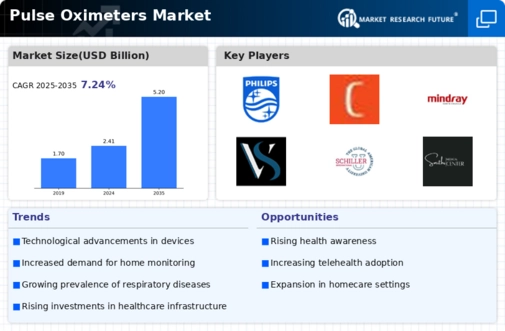
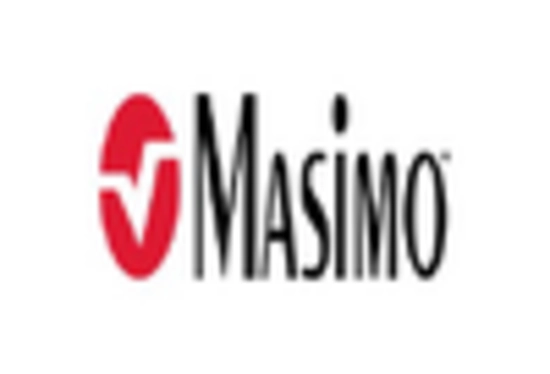

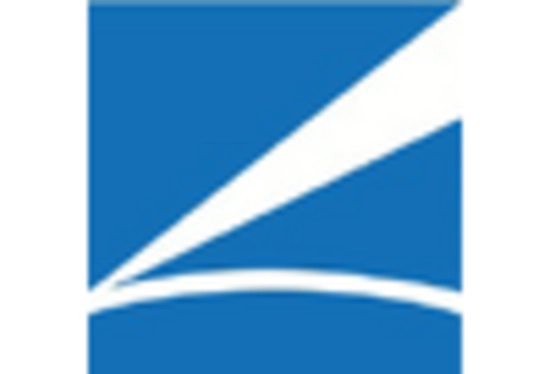
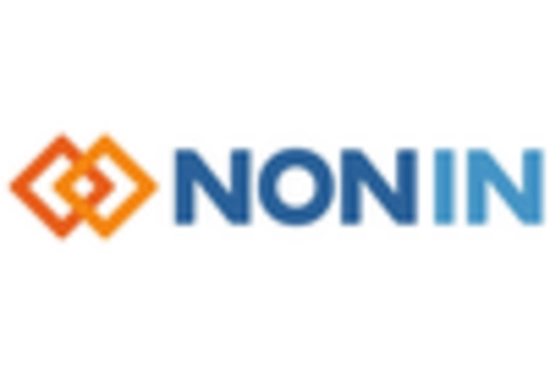

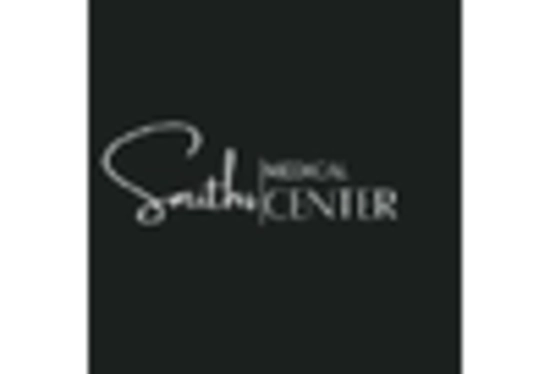

Leave a Comment